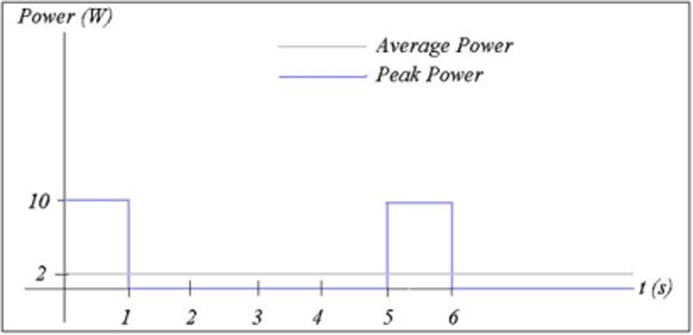What is Peak Power?
The peak power is the maximum power that the power supply can sustain for a short time and is sometimes called the peak surge power. The peak power differs from the continuous power which refers to the amount of power that the supply can supply continuously. The peak power is always higher than the continuous power and only required for a limited amount of time.
A high wattage power supply will be able to provide sufficient power to drive all the components, and achieve the intended functions of the load or circuit. However, a power supply that is exactly 100% load capacity might not be enough due to losses and other factors that may affect the efficiency of the load.
The aim of having the peak power is to ensure that the power supply will be able to handle load spikes and protect the power supply hence preventing spikes from damaging the supply. For example a 600 Watts supply can have a peak power of about 1200 Watts for 5 seconds. The peak power differs from one supply to the other and is usually specified in the power supply data sheets.
Why use a power supply with peak power capability
Most circuits and especially those with electromechanical components such as disk drives, motors, fans, actuators and pumps, requires start-up currents that are usually higher than the steady current that the equipment draws when operating normally.
This initial current may be anywhere between two and three times the normal current, but only lasts for a short period of time, typically between a few microseconds to a few seconds. The power supply should be able to handle such spikes and others that may occur without interrupting the operation or the function of the load.
A simple waveform showing an average power of 2W and a peak power of 10W – Image Credit
Choosing the right power supply rating
Running the power supply at full load for extended periods deteriorates its components and increases the risk of failure. It is always recommended to use a higher wattage power supply, and then run it at half capacity as opposed to using a lower wattage supply that is run at full capacity.
The power supply with a peak power rating has the ability to supply a current that exceeds its normal rating for a short period as specified. Instead of buying a power supply with a very high power rating just to take care of a few seconds, peak demand, a power supply of a lower rating but with the ability to supply the peak power, can be used.
For example, a 700 W continuous-rated power supply with a high peak power rating can support a peak demand of two to three times its rating and provide up to 2200 Watts peak power for a short period. This will obviously cost less than a 2200 Watts continuous-rated power supply.
Other than the wattage, it is important to ensure the supply has the right voltage. Otherwise, too little or too much voltage may damage the components. This happens when the components try to overcompensate for low voltage by drawing more current so as to meet the load power requirement. When the voltage is higher, the components will try to drop the extra voltage by dissipating more heat that may eventually damage them.
Conclusion
There are power supplies that can provide peak power or current that is two or three times more than the normal rating of the supply. The peak rating is usually specified for a limited period of time. A good approach to cater for both normal and peak power demands, is to have a normal power supply rated at the non-peak, normal operating current, and yet be able to handle the short duration peak current.
